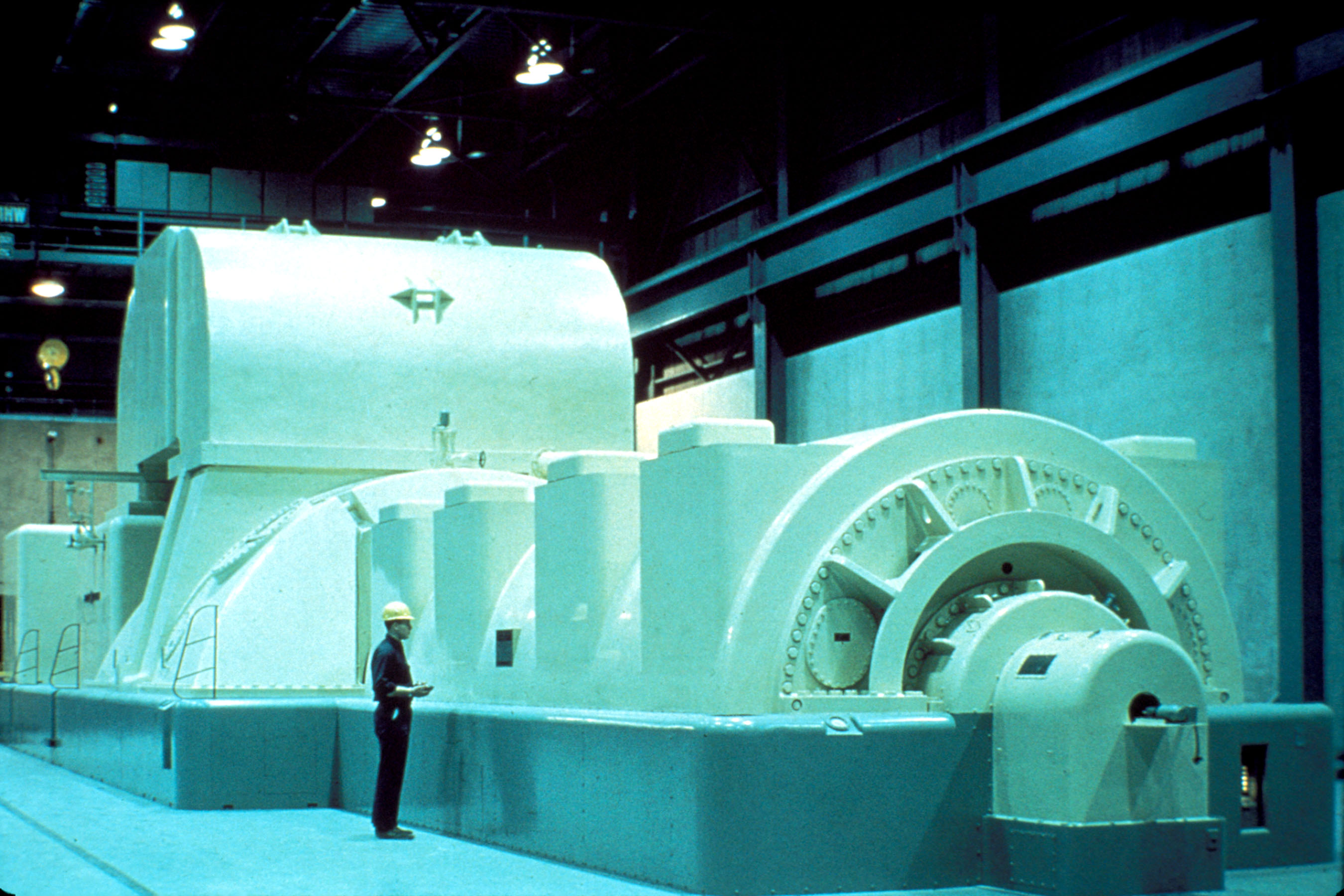
Electric generator
In electricity generation, a generator[1] is a device that converts motion-based power (potential and kinetic energy) or fuel-based power (chemical energy) into electric power for use in an external circuit. Sources of mechanical energy include steam turbines, gas turbines, water turbines, internal combustion engines, wind turbines and even hand cranks. The first electromagnetic generator, the Faraday disk, was invented in 1831 by British scientist Michael Faraday. Generators provide nearly all the power for electrical grids.
This article is about electromagnetic power generation. For electrostatic generators like the Van de Graaff machine, see Electrostatic generator. For devices to convert photons into electricity, see Photovoltaic panel.
In addition to electricity- and motion-based designs, photovoltaic and fuel cell powered generators use solar power and hydrogen-based fuels, respectively, to generate electrical output.
The reverse conversion of electrical energy into mechanical energy is done by an electric motor, and motors and generators are very similar. Many motors can generate electricity from mechanical energy.
Electromagnetic generators fall into one of two broad categories, dynamos and alternators.
Mechanically, a generator consists of a rotating part and a stationary part which together form a magnetic circuit:
One of these parts generates a magnetic field, the other has a wire winding in which the changing field induces an electric current:
The armature can be on either the rotor or the stator, depending on the design, with the field coil or magnet on the other part.